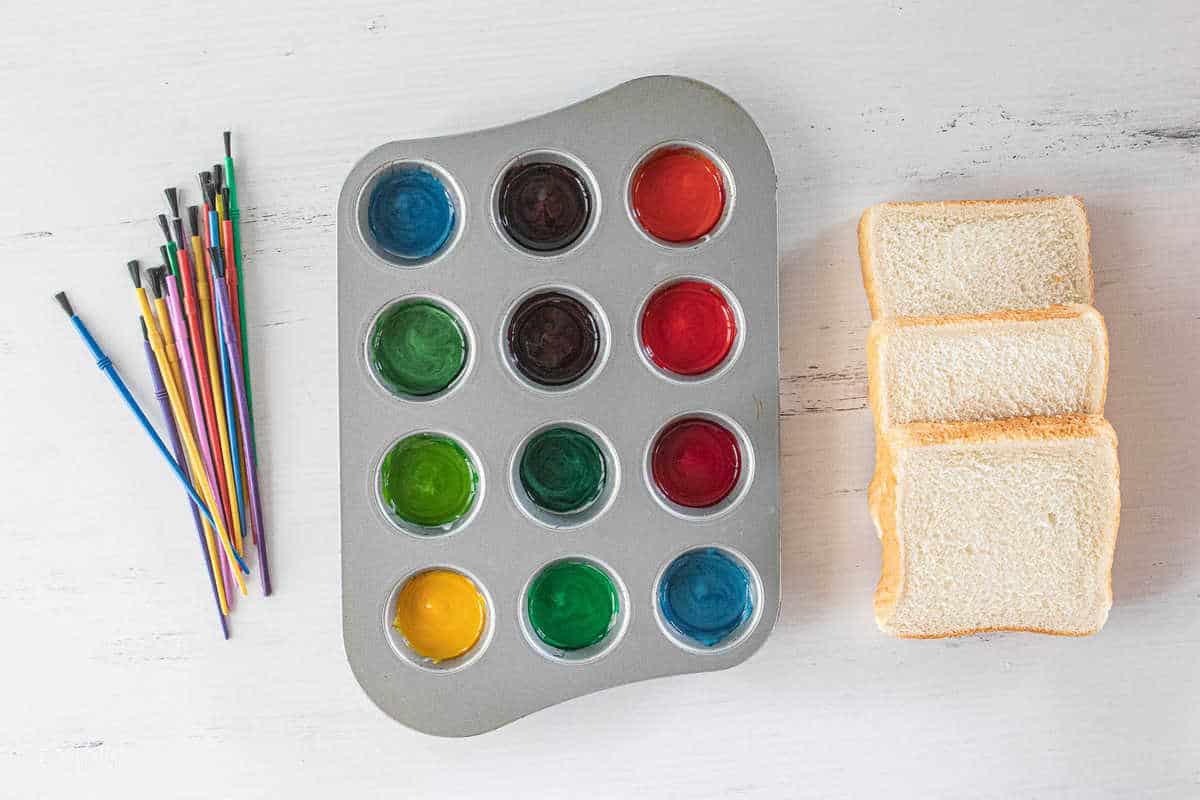How to Make Edible Paints: A Vibrant Guide for Creative Family Fun
Hello, lovely parents! ? Are you looking for a way to combine creativity, fun, and safety in your child’s playtime? Well, you’re in for a treat! Making edible paints is not only a fantastic sensory activity for your little ones but also a great opportunity to teach them about colors and tastes while ensuring they’re safe, even if they decide to sneak a little taste. Let’s dive into the colorful world of homemade edible paints!
Buckle Up for a Yummy Art Adventure!
Why edible paints, you ask? Traditional paints can be toxic, and kids being kids, a bit of paint is bound to end up in their mouths. Edible paints are completely non-toxic, easy to make, and you probably already have most of the ingredients in your pantry! ???
Ingredients for Basic Edible Paint
- 1 cup of cornstarch or flour
- 2 cups of cold water
- Natural food coloring or homemade dye (e.g., beet juice for red, carrot for orange, spinach for green)
- 1/2 teaspoon of salt (optional – for preservation)
- Clean containers or jars for storage
- Paintbrushes or fingers for painting
Now that you have your list, let’s paint a picture of the process. But don’t worry; you’ll find it’s as easy as pie! ??
Step-by-Step Guide to Making Your Edible Paint
Step 1: Start by mixing your cornstarch or flour with the cold water. Make sure it’s blended well to avoid lumps.
Step 2: Heat the mixture in a saucepan over low heat. Keep stirring until it thickens to a paint-like consistency. If it’s too thick, you can always add a little more water to thin it out.
Step 3: Once thickened, remove the saucepan from the heat and let your base cool down a tad bit. Then, divide the mixture into different containers, depending on how many colors you want to create.
Step 4: Add natural food coloring or homemade dye to each container. This is where the magic comes alive, and you get to create a rainbow of possibilities! Stir in the colors until you achieve the vibrancy you desire.
Step 5: If you plan to keep the paint for more than a day, consider adding a bit of salt. This acts as a natural preservative, which can help keep the mixture from spoiling too quickly.
Step 6: Let your edible paints cool completely, and voila, you have a homemade palette ready to inspire wonder and joy!
Tips for a Smoother Art Session
- Consistency: If your paints are too thick, add a dash of water. If too runny, a bit more cornstarch or flour should do the trick.
- Variety: Create different textures by adding sand or rice for tactile fun.
- Earth-Friendly: Use biodegradable glitter to add some sparkle without the environmental harm!
Now that you have your edible paint, the sky’s the limit! ? Spread out some paper, canvases, or even use it as a food decoration medium. It’s a wonderful way to introduce your children to the arts while keeping them safe from harmful chemicals.
If you’re eager to continue exploring the universe of edible paints, stay tuned. Up next, we’ll be diving into exciting variations, including gluten-free options and how you can use these paints beyond the canvas for educational activities and beyond!
Remember, the best part about making homemade edible paint is the peace of mind it brings. You’ll know exactly what’s in your child’s art supplies – simple, safe ingredients. Plus, the fun and bonding you’ll experience during this artsy exploration is priceless. So, let’s embrace the mess, roll up our sleeves, and create some colorful memories! ?
Stay creative and see you soon with our next splash of color in the wonderful, edible art world!

5 Essential Things Parents Should Know When Preparing Edible Paints
1. Preparing a Safe and Easy-to-Clean Space
Tip: Before you whip up your paints, designate an area where the art magic will happen. Cover surfaces with newspapers, wax paper, or a plastic sheet to protect against spills and stains. An easy-to-clean space ensures a worry-free painting session where the focus remains on creativity and not on the cleanup!
2. Allergy and Sensitivity Check
Tip: Always check for any food allergies or sensitivities your child may have before creating your edible paint concoctions. If you’re using natural food dyes, ensure that the ingredients used are safe for your child to consume, even in small quantities.
3. Dress for a Joyful Mess
Tip: Dress your little ones in clothes that you don’t mind getting messy, or opt for smocks and aprons. Remember, art is about expression, and sometimes that can get a bit messy – but that’s half the fun!
4. Edible Does Not Always Mean Snackable
Tip: While edible paints are non-toxic, it’s important to teach your children that these paints are for creating art, not for snacking. Encourage them to express their creativity on paper, not their taste buds!
5. Involve Your Kids in the Preparation Process
Tip: Children love being involved in grown-up tasks, so why not let them be your little helpers? They can assist in adding color, stirring the paint, and filling up the containers. This not only makes for a fun learning experience but also boosts their confidence and sense of accomplishment.
Equipped with these useful pointers, you’re all set to make a splash in the delightful realm of edible paints! Keep the energy high and the spirits bright as you and your kiddos embark on an edible art journey that is bound to be as deliciously fun as it is memorable. Remember, every swipe of the brush is a stroke of genius in the eyes of a child. ??
See more great Things to Do with Kids in New Zealand here. For more information see here
Disclaimer
The articles available via our website provide general information only and we strongly urge readers to exercise caution and conduct their own thorough research and fact-checking. The information presented should not be taken as absolute truth, and, to the maximum extent permitted by law, we will not be held liable for any inaccuracies or errors in the content. It is essential for individuals to independently verify and validate the information before making any decisions or taking any actions based on the articles.




